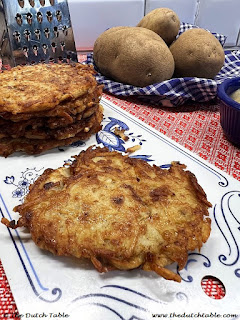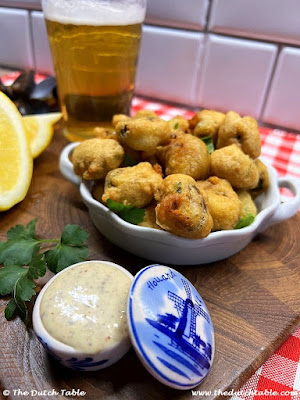I can see why this dish would be suitable for workers: it is loaded with carbs which provide plenty of energy. The ingredients are also easily found and prepared: apples, onions, potatoes, and carrots are ingredients for many a stamppot, and brown beans are the main ingredient for a delicious soup.
Because I can't really vouch for the recipe's origin, background, regional impact, or significance, there is a good side: we can make the recipe our own, and nobody can tell us we're doing it wrong :-) The premise of the dish is that the five cooked ingredients are added to a deep bowl or dish, seasoned with salt and pepper. The two main variations seem to be that you can:
- boil all the ingredients in bouillon or water.
- fry the onions and the apples in butter, boil the potatoes, beans, and carrots.
From here on out, it's a free for all. You can mash the boiled ingredients roughly, with a bit of butter and some of the cooking liquid, warm milk, or appelmoes and eat it like a coarse stamppot. You can leave the vegetables whole and serve it with the cooking liquid (more like a stew), or thicken the cooking liquid and season it with mustard and pour it over before mixing it in. Or you can serve it with a dollop of butter or mayonnaise. You can also add rookworst, smoked sausage, and/or bacon. See what I mean? Many variations of the same dish - so it's all up to what you prefer! As for me, I like it two ways: either hot, with smoked sausage, with a mustard sauce, or cold the next day, chopped up and mixed with mayo, more like a potato salad. Below is the recipe for the hot dish. Serves 4.
Utrechtse Vijfschaft
4 medium-sized potatoes, peeled and quartered
1 vegetable bouillon cube
1 large carrot, peeled and sliced
1 small can brown or red kidney beans (approx.8 oz/ 250 grams), drained and rinsed
1 smoked rope sausage
1 large onion
1 large apple
2 tablespoons (30 grams) butter
2 tablespoons mustard
1 tablespoon cornstarch
Salt, black pepper
Bring the potatoes to a boil in enough water to cover, with the bouillon cube for about 10 minutes. Turn to simmer, and add the carrots, the rinsed beans, and the smoked sausage and slow boil for 10 minutes more. Check to see if the potatoes are done, then drain, but reserve a cup (250 ml) of the cooking water.
In the meantime, peel and slice the onion in rings, core the apple, and slice into 8 slices. Melt the butter in a skillet and brown the onions, for about ten minutes on low-medium heat. Add the apple slices and fry them brown on each side, for about five minutes. Turn off the heat and set it aside.
Mix the cornstarch with a tablespoon of cold water. Bring the cooking water to a boil, mix in the cornstarch slurry and stir until it thickens, about a minute. Turn down the heat and stir in the mustard. Taste to see if you'd like a stronger mustard taste, if so add another tablespoon.
Mix the potatoes, carrots, beans, fried onions, and apple in a large bowl. Taste and see if you need to adjust the salt. Sprinkle freshly ground black pepper over the dish. Serve the warm mustard sauce on the side, together with the sliced sausage.














